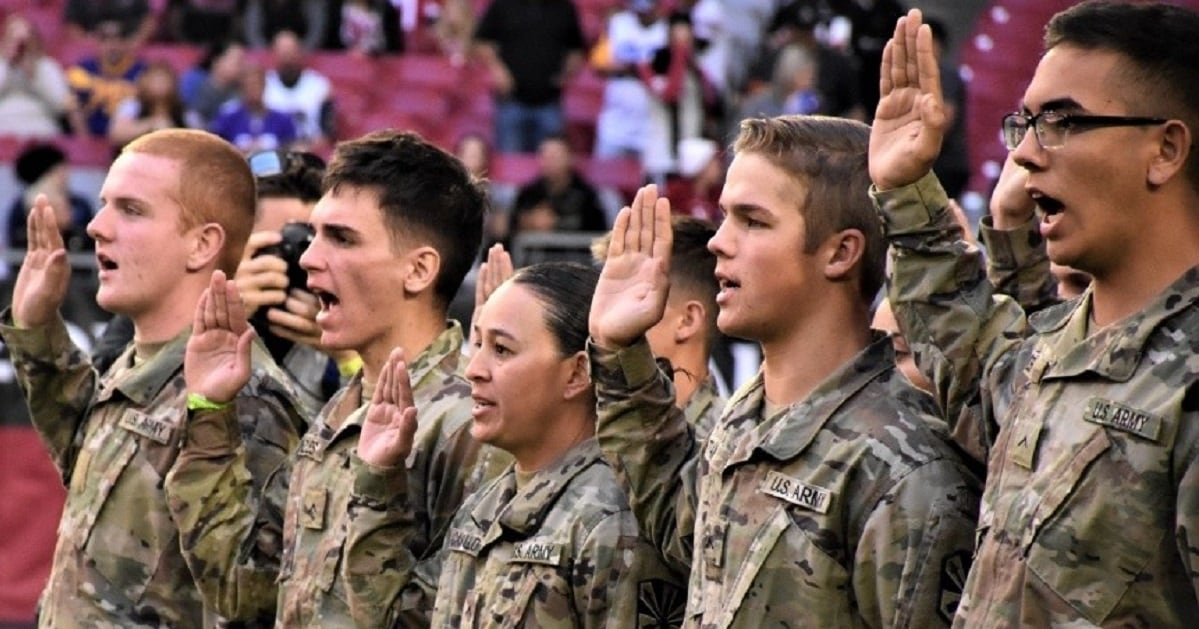“We’re in a war for talent.”
That’s one of the most often-used catch phrases for Army senior leaders when discussing the service’s effort to attract, train and retain soldiers.
But Army Recruiting Command’s top officials put it a little differently. In an interview with Army Times, USAREC Command Sgt. Maj. John Foley called it a “competition…with Corporate America for highly-qualified, talented and bright individuals.”
Army Times interviewed Foley and USAREC’s commander, Maj. Gen. Kevin Vereen, to check in on the command’s initiatives amid a challenging labor market.
Foley’s not wrong. While some observers have attributed recruiting challenges to a perceived decline in the number of Americans qualified to serve, the CSM laid out a different problem that his recruiters are facing on the streets — other organizations have taken a few pages out of the Army’s playbook.
“We used to be the sole entity…that said ‘Hey, we’ll pay for your college,’” Foley said. “Now lots of organizations — lots of companies — out there are doing the same.”
He pointed to increased tuition assistance benefits from major companies and signing bonuses. “They have increased their value proposition,” said.
Research has indicated that such pay and benefits are some of the primary factors recruits list as having led them to join.
Foley and Vereen emphasized that a big part of convincing prospective soldiers to join the Army rather than companies like Amazon depends on both matching those incentives — to include bonuses of up to $50,000 — and offering career agency for recruits.
“Now young kids want to be part of the decision making in their own careers and lives,” Vereen said.
That’s led the command to introduce new contract options, such as allowing recruits to pick their first duty station from a list of several major U.S. installations. They’ve also expanded short-term enlistment options for two-year contracts that also carry a subsequent two-year Reserve commitment.
“We look at the landscape of the country, and then we assess that, and then we adapt accordingly,” said Foley.
Foley and Vereen also attributed difficulty recruiting new soldiers into the Army Reserve — which missed its recruiting goal by more than 4,000 troops in fiscal 2021 — to systemic factors limiting applicants’ choices.
RELATED

One big challenge: prospective part-time soldiers are recruited into specific vacancies, and units near them may not have the job they want. The Reserve also lacks combat arms units, save for a solitary infantry battalion in Hawaii.
They hope that a focus on pushing the two-year active duty contracts that include a two-year reserve commitment can help address that shortfall.
The two leaders also say it’s too soon to tell whether their attempts to update USAREC practices — through “mission modernization” — will lead to better production despite having fewer recruiters.
Those efforts include individual missions for recruiting NCOs, a return to assigned geographical territories and rolling quarterly mission targets for units, in addition to a focus on social media outreach and new technologies.
“We started it here in December,” said Vereen. “We’re still trying to work through at least a quarter’s worth of analytics, but for all intents and purposes, it’s doing fairly well.”
Davis Winkie covers the Army for Military Times. He studied history at Vanderbilt and UNC-Chapel Hill, and served five years in the Army Guard. His investigations earned the Society of Professional Journalists' 2023 Sunshine Award and consecutive Military Reporters and Editors honors, among others. Davis was also a 2022 Livingston Awards finalist.









